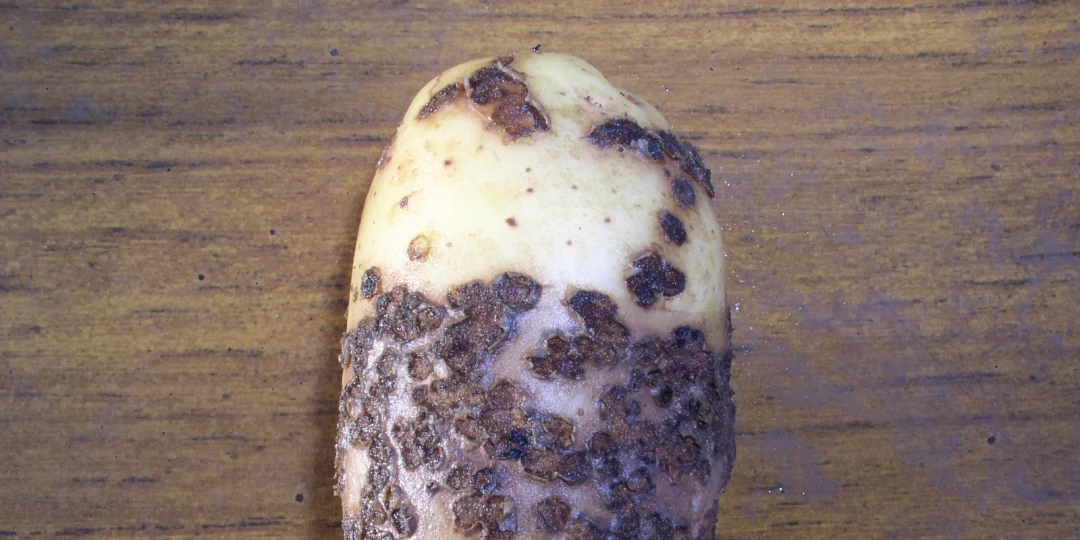
Common Scab
Streptomyces scabies

Streptomyces scabies
Actinomycete (closely related to a bacterium)
Potatoes, beetroot, radishes, carrots, turnips, swedes and a range of weed species.
Shallow and irregular blemishes on the tuber, occasionally with a raised appearance. Deep cracking and pits develop in severe cases.
The main source of the disease is infected soil. It exists as a free-living organism which infects tissue via lenticels (pores in the tuber surface) or wounds caused by machinery or pests. Infection occurs soon after tuber initiation and the plant responds by producing loose corky tissue which enlarges to form scabs as the tuber swells. It does not develop and spread in storage.
Favourable Factors
Dry, warm soil conditions and light alkaline soils.
A commonly occuring disease of potato tubers and although it may not affect their yield, it can reduce their market value because infected tubers are less attractive and it can lead to considerable peeling wastage.
Information on less susceptible varieties is available on the National List
Avoid raising soil pH levels with lime prior to growing potatoes
Plant disease free tubers
Irrigate when soil moisture is high and allow the crop to dry out before harvest
There is no chemical treatment available



